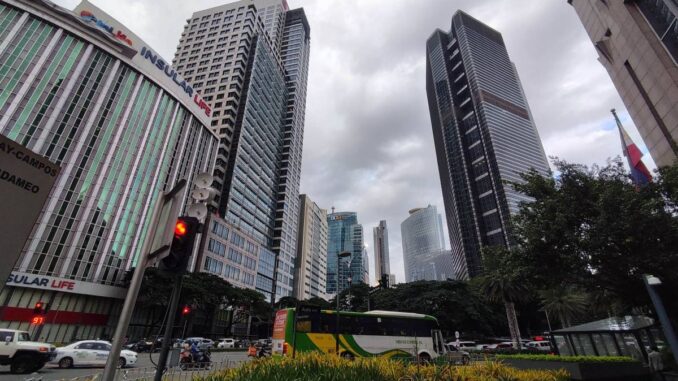
SUBDUED public and private spending could have weighed on third-quarter economic growth, analysts said, putting the 2024 target at risk.
All but two of nine estimates issued by economists and research units projected July-September gross domestic product (GDP) growth lower than the second quarter’s 6.3 percent, with the median of 5.7 percent below the government’s full-year goal of 6.0 to 7.0 percent.
This would put the nine-month expansion at 5.9 percent and growth for the last three months of the year would have to be at least 6.2 percent for the target to be met.
Preliminary third-quarter data will be released by the Philippine Statistics Authority this Thursday. Second-quarter data revisions could also be announced ahead of the July-September result.
The higher-than-expected 6.3-percent April-June showing — analysts had estimated an improvement to 6.0 percent after the first quarter’s below-target 5.8 percent — had economic managers earlier expressing optimism that the 2024 goal would be achieved via 6.0-percent expansions in the last two quarters.
Metrobank Research, however, said growth could have instead decelerated to 5.5 percent and added an expected lift from lower interest rates would only have begun to be felt toward the end of the quarter.
Moody’s Analytics economist Sarah Tan, ANZ Research, HSBC Global Research economist Aris Dacanay and Chinabank Research, meanwhile, all expect growth to have slowed to 5.7 percent.
Tan said that while government spending and private investment would have continued driving the economy, “private consumption will stay muted as it will take time for the recent rate cuts to filter through the economy.”
High interest rates have been blamed for holding down spending, and the Bangko Sentral ng Pilipinas (BSP) finally started easing in October, lowering key interest rates by 25 basis points (bps) and following this up with another 25 bps cut last month.
Tan also said that Philippine exports could have lost “some of their shine due to … soft external demand” and added that a slower increase in tourist arrivals could have affected GDP growth.
ANZ Research said that leading indicators of private consumption likely softened while other indicators such as consumer credit growth and remittance flows would have recorded steady growth.
“This points to a moderation in private consumption growth in the third quarter,” it said.
HSBC’s Dacanay echoed this, adding that public spending, both in terms of consumption and investment, would have also moderated in July-September.
“Though the central bank did begin its easing cycle during the quarter, we don’t think the change in the monetary stance had affected 3Q 2024 growth,” he added.
“That said, investment, most especially in private construction and durable equipment, likely remained weak,” he added.
Chinabank Research said that household consumption was likely again the primary driver of growth, though it “may have remained subdued due to persisting price pressures.”
“Continued public and private construction activities continued to support growth in capital formation. In contrast, a wider trade deficit amid weak goods exports, particularly semiconductors, likely tempered growth,” it added.
Sun Life Investment Management and Trust Corp. economist Patrick Ella, meanwhile, expects growth to have hit the lower end of the full-year target at 6.0 percent, driven by a recovery in household spending.
With an even higher 6.2-percent estimate, Union Bank of the Philippines chief economist Ruben Carlo Asuncion said that farm output could have contributed.
“Disinflation that bodes well for gradual recovery of purchasing power, strong employment generation by the services sector in August and buoyant manufacturing PMI (purchasing managers’ index) ending in September driven by local demand are clear signals of positive macro catalysts during the quarter,” he added.
Rizal Commercial Banking Corp. chief economist Michael Ricafort, for his part, said that a seasonal increase in imports, manufacturing and other production activities would have allowed growth to stay unchanged at 6.3 percent.
“Increased infrastructure spending would also contribute to economic growth in view of election-related spending in preparation for the May 2025 elections,” he added.
Emmanuel Lopez from the University of Santo Tomas Graduate School had the highest forecast of 6.5 percent, which he said would be due to a “continued improvement in the price stability of basic commodities despite fluctuating petroleum prices.”
“Significant to this is the reduction in the policy rate by the [BSP’s policymaking] Monetary Board, signaling a positive movement in investment borrowing,” Lopez added.


Be the first to comment